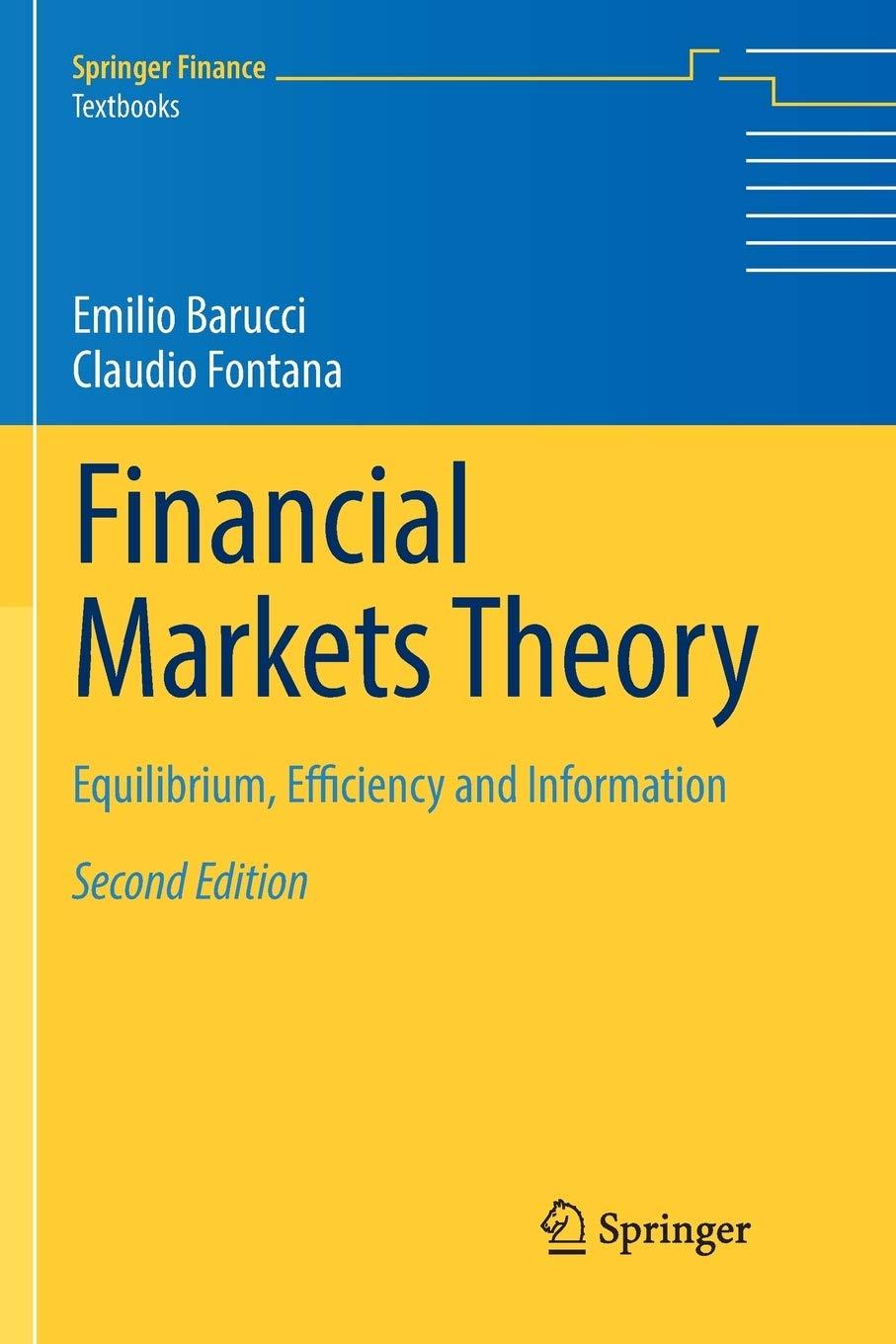Under the assumptions of Sect. 6.4, suppose that (T=2) and consider a representative agent with logarithmic utility
Question:
Under the assumptions of Sect. 6.4, suppose that \(T=2\) and consider a representative agent with logarithmic utility function \(\sum_{t=0}^{2} \delta^{t} \log \left(c_{t}\right)\). Suppose furthermore that the aggregate endowment process \(\left(e_{t}\right)_{t=0,1,2}\) starts from a deterministic value \(e_{0}\) at the initial date \(t=0\) and, at date \(t=1\), takes the two possible values \(e_{1}(u)\) and \(e_{1}(d)\) with probabilities \(p\) and \(1-p\), respectively, and then evolves deterministically on the period [1,2], taking values \(e_{2}(u)\) and \(e_{2}(d)\), respectively (the price of aggregate endowment is supposed to be always normalized to one). In other words, the uncertainty of the economy is represented by the uncertainty about two possible states of the world realized at the intermediate date \(t=1\). Show that
\(1+i(0,1)=\frac{1}{\delta \mathbb{E}\left[\frac{1}{x(0,1)}\right]}, 1+i(0,2)=\frac{1}{\delta \sqrt{\mathbb{E}\left[\frac{1}{x(0,2)}\right]}}, 1+f(0 ; 1,2)=\frac{1}{\delta} \frac{\mathbb{E}\left[\frac{1}{x(0,1)}\right]}{\mathbb{E}\left[\frac{1}{x(0,2)}\right]}\), where \(x(0,1):=e_{1} / e_{0}\) and \(x(0,2):=e_{2} / e_{0}\) denote the growth rates of the aggregate endowment on the periods \([0,1]\) and \([0,2]\), respectively. Show also that on the period \([1,2]\) it holds that\[\begin{array}{ll}1+i(1,2 ; u)=\frac{x(1,2 ; u)}{\delta} & \text { if } e_{1}=e_{1}(u), \tag{6.89}\\1+i(1,2 ; d)=\frac{x(1,2 ; d)}{\delta} & \text { if } e_{1}=e_{1}(d),\end{array}\]
with \(i(1,2 ; u)\) and \(x(1,2 ; u)(i(1,2 ; d)\) and \(x(1,2 ; d)\), resp.) denoting respectively the interest rate and the aggregate endowment growth rate on the period [1,2] if state \(u\) (state \(d\), resp.) is realized.
Step by Step Answer:

Financial Markets Theory Equilibrium Efficiency And Information
ISBN: 9781447174042
2nd Edition
Authors: Emilio Barucci, Claudio Fontana





